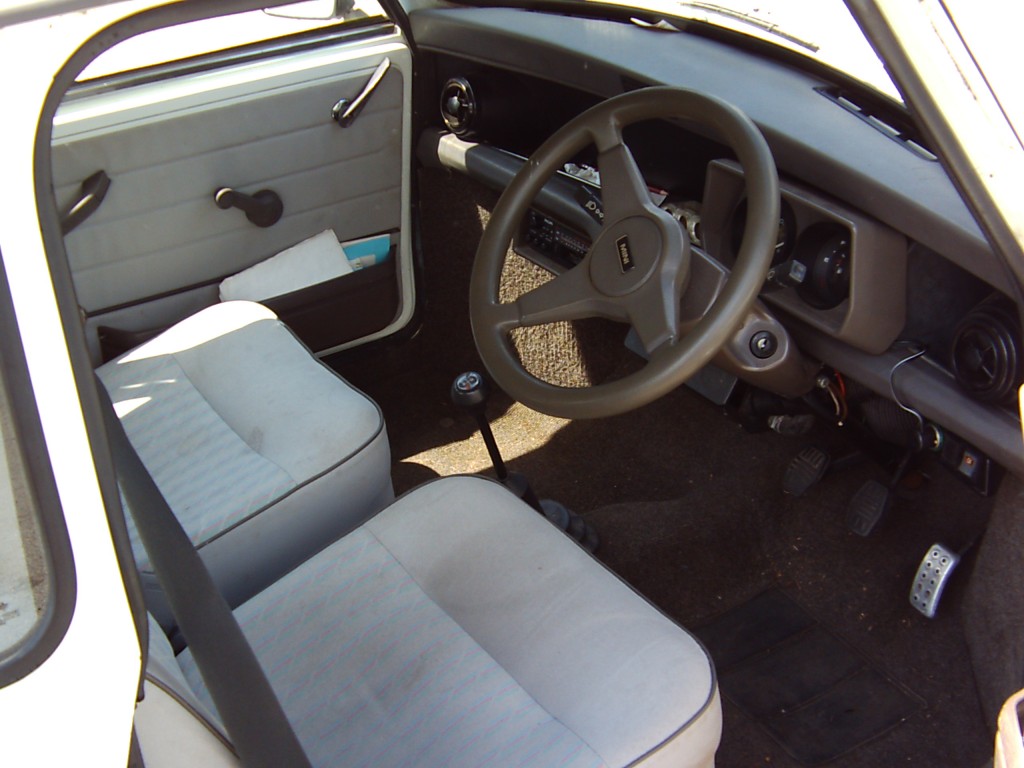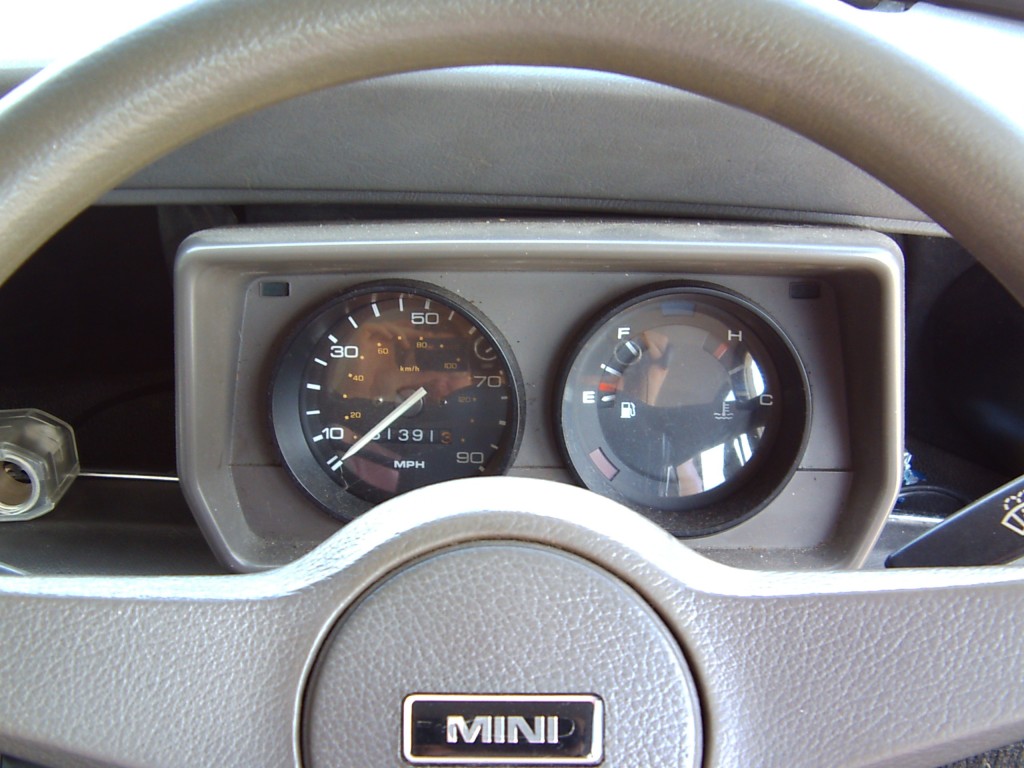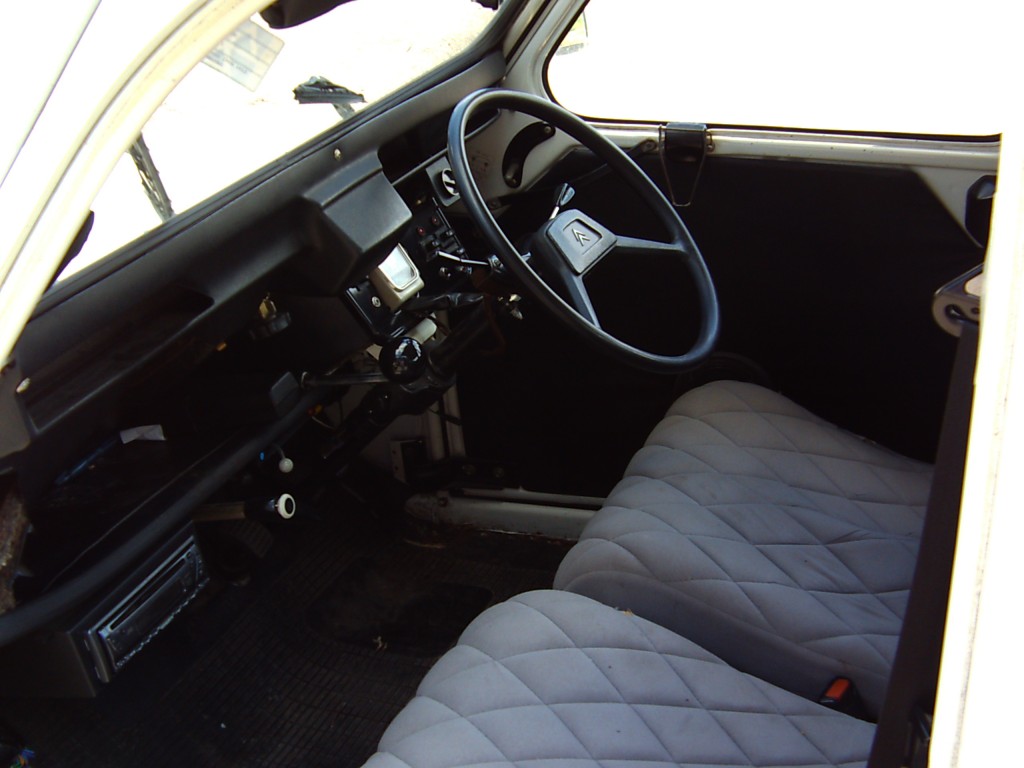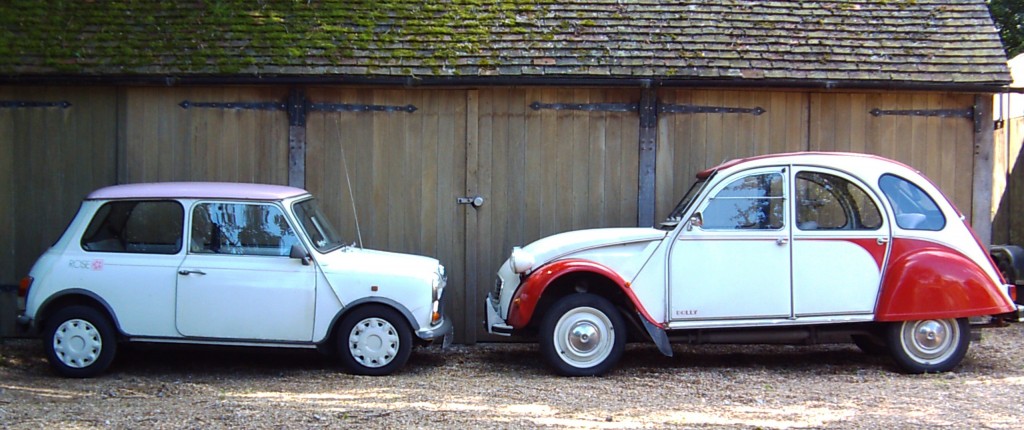 This week we take a look at two icons of motoring that are also national institutions in their home nations. Both were radical designs when they were introduced and between them they pretty much defined how small cars would be built in the post-war years and beyond. Both were the product of very specific design aims by very individualistic engineers.
This week we take a look at two icons of motoring that are also national institutions in their home nations. Both were radical designs when they were introduced and between them they pretty much defined how small cars would be built in the post-war years and beyond. Both were the product of very specific design aims by very individualistic engineers.
Two examples facing-off here have more specific qualities in common. Both were built in the late 1980s and they are both relatively late examples of their type representing the ‘ultimate’ incarnation of the design. Both are special edition models as well, although looking at their specification in comparison to a normal version this means very little in either case.
So as well as being a straightforward comparison between two small cars this Head to Head will also be something of an evolutionary study. Are these cars any better than their ancestors for the decades of evolution that has or hasn’t happened during their production life? Do this Mini and this 2CV still exibit the qualities that made the original vehicles such as success?
Let’s start with the home player.
1988 Mini ‘Rose’ Edition
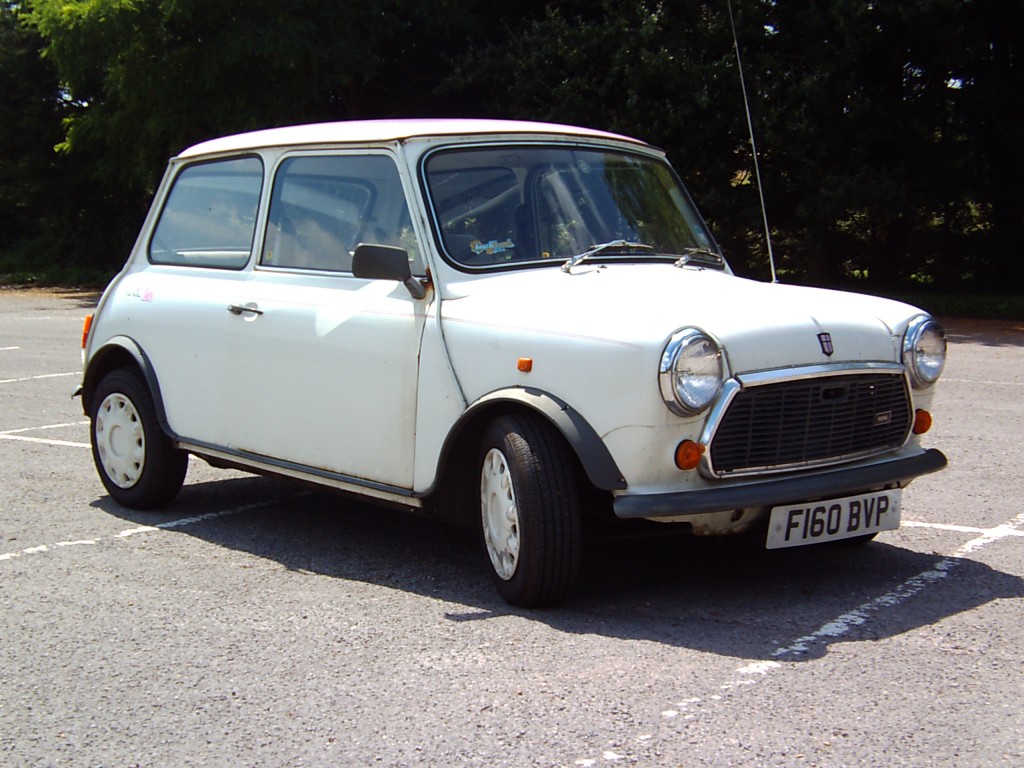 The Mini is such a familiar shape that it comes as something of a surprise to realise that it has been out of production for 12 years and that the days when any road journey would involve seeing any number of ordinary Minis going about ordinary business are largely gone. You still see them around, of course, it’s just that they’re all obviously enthusiast-owned, with lots of chrome and Cooper parts (regardless of whether the mechanical specification justifies it or not) and usually a couple of London-Brighton placards.The days when people bought Minis purely because they were simply cheap, small cars are over.
The Mini is such a familiar shape that it comes as something of a surprise to realise that it has been out of production for 12 years and that the days when any road journey would involve seeing any number of ordinary Minis going about ordinary business are largely gone. You still see them around, of course, it’s just that they’re all obviously enthusiast-owned, with lots of chrome and Cooper parts (regardless of whether the mechanical specification justifies it or not) and usually a couple of London-Brighton placards.The days when people bought Minis purely because they were simply cheap, small cars are over.
This process began long ago. Long before the Mini ceased production, in fact. Like all cars that for whatever reason have long production runs the Mini went through the usual phases of being new, then being merely old and a bit out-dated. If a car can survive long enough it will exit this phase and become a ‘design icon’ simply by virtue of having been around a long time. At this point the lucky manufacturer can sell the car as a fashion accessory and charge a good premium for a design which amortized its design and tooling costs ages ago. For the Mini this stage was reached in the 1980s and Austin-Rover cashed in by making numerous special edition Minis to sell to fashionable, image-concious buyers alongside the ordinary ones. The number and variety of these editions is baffling but most of them had one thing in common in that they were little more than a City-spec (i.e. basic) Mini with some body graphics and a different roof colour.
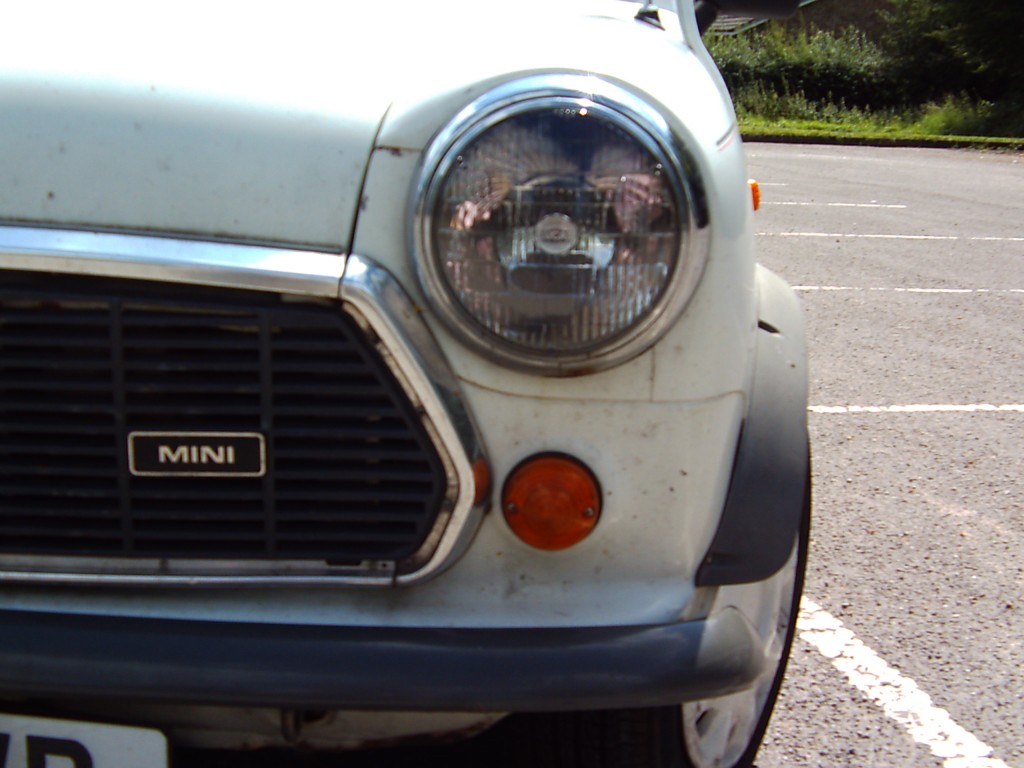 The Rose edition of 1988 was exactly this. Under the skin it’s a base-spec Mini with a 998cc A+-Series engine, cloth seats and a radio/cassette screwed under the dash in the passenger’s footwell. The ‘special’ bits are the roof (which is pink), the (pink) body tapes, the (pink) floral stickers on the rear flanks and the special badges which are, inevitably, pink. The Rose is otherwise a standard Mark 5 Mini, which is largely the same as the Mk3 introduced in 1969. There are few obvious changes from the Mini of 1959, some for the better, some for worse – the big rear light clusters are undoubtably safer but they spoil the neat rear end design.
The Rose edition of 1988 was exactly this. Under the skin it’s a base-spec Mini with a 998cc A+-Series engine, cloth seats and a radio/cassette screwed under the dash in the passenger’s footwell. The ‘special’ bits are the roof (which is pink), the (pink) body tapes, the (pink) floral stickers on the rear flanks and the special badges which are, inevitably, pink. The Rose is otherwise a standard Mark 5 Mini, which is largely the same as the Mk3 introduced in 1969. There are few obvious changes from the Mini of 1959, some for the better, some for worse – the big rear light clusters are undoubtably safer but they spoil the neat rear end design.
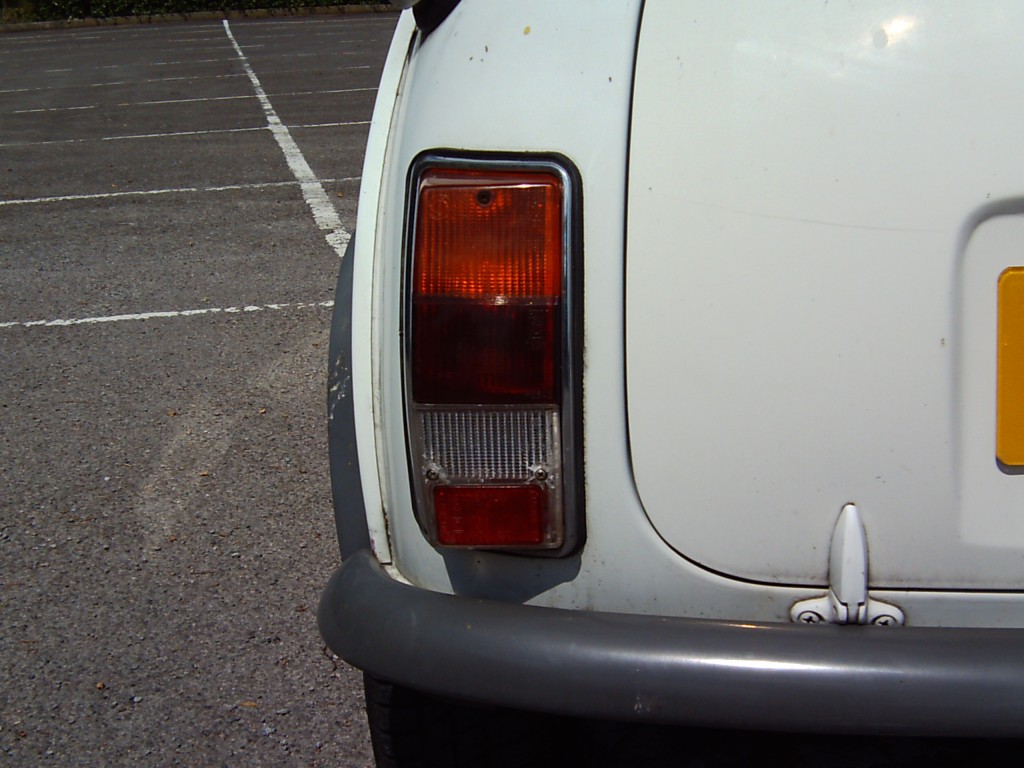 I always find Minis a bit of a squeeze to fit comfortably into, but the later the car the worse this is. One of the things that made the original Mini such a masterpiece of packaging was the clever design of the interior where the dashboard, seats, and trim took up as little space as possible. Over the years customer and legislative demands gradually corrupted the minimalism of the early cars and it makes a lot of difference for the taller driver where space is already at a premium. The different seats are biggest culprit. The bases are taller, wider and firmer than the originals, meaning you sit a good inch or so higher. The thicker door trim cards and winding window mechanism remove both the elbow room that the recessed inner door skin allowed and reduce the size of the characteristic door pockets. The dashboard rails received plastic padding for safety reasons in the Mk3 face-lift and again its makes a small but significant difference. Same goes for the steering wheel, a thick 3-spoke plastic item purloined from a Metro. This Mini has none of the striking airy and open feel of the Mk1, feeling like the small car that it is.
I always find Minis a bit of a squeeze to fit comfortably into, but the later the car the worse this is. One of the things that made the original Mini such a masterpiece of packaging was the clever design of the interior where the dashboard, seats, and trim took up as little space as possible. Over the years customer and legislative demands gradually corrupted the minimalism of the early cars and it makes a lot of difference for the taller driver where space is already at a premium. The different seats are biggest culprit. The bases are taller, wider and firmer than the originals, meaning you sit a good inch or so higher. The thicker door trim cards and winding window mechanism remove both the elbow room that the recessed inner door skin allowed and reduce the size of the characteristic door pockets. The dashboard rails received plastic padding for safety reasons in the Mk3 face-lift and again its makes a small but significant difference. Same goes for the steering wheel, a thick 3-spoke plastic item purloined from a Metro. This Mini has none of the striking airy and open feel of the Mk1, feeling like the small car that it is.
None the less the look and layout of the interior is well up to 1980s standards. The added trim and plastics give the whole cabin a more civilised feeling than the stark painted metal and chrome of the older cars and the seats, whilst forcing me into the characteristic ‘Mini hunch’ are more supportive. The instruments are in front of the driver and consist of two instruments from the BL parts bin- a speedo and the inevitable double gauge (fuel and temperature) with two unlabelled warning lights for charge and oil pressure underneath. I wonder how many 1980s Minis died an early death because owners ignored the seemingly unimportant amber warning light? Betraying the car’s 1950s roots the heater unit is fully visible hanging under the lower dash rail and it has a simple On/Off fan switch. The hot/cold control is a push-pull knob on the dash, rather charmingly illustrated by a pictogram of a log fire.
Where the later Mini shows clear improvement over its forebears is in the creature comforts. It has two speed wipers, dashboard air vents, the aforementioned radio, an interior light with courtesy function (the light unit is, of course, the inevitable rectangular Light of A Thousand Uses proudly embossed with the A-R chevron logo), a heated windscreen and a 12-volt socket (or ‘cigar lighter’- how times have changed).
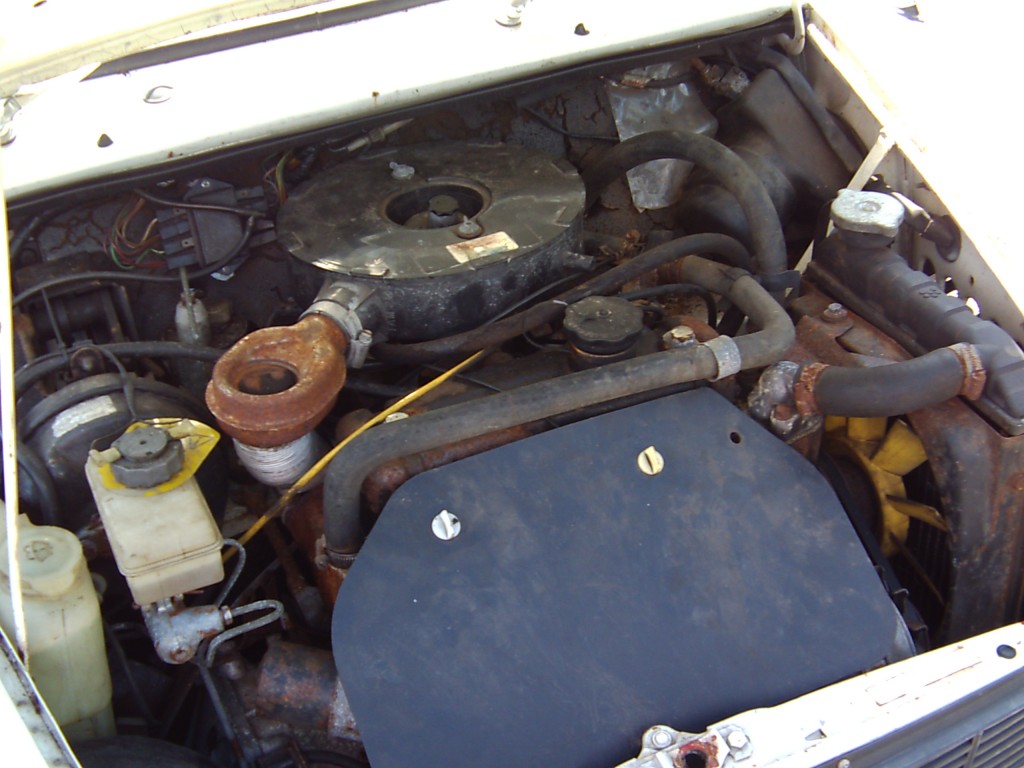 After pulling out the other push-pull knob for the choke and turning the key the A-Series engine churns over rapidly on the starter before catching smoothly. It idles with the characteristic tap-tap-tap from the top end but it otherwise runs quietly and smoothly. The Rose’s soundproofing and trim does a good job of isolating the various mechanical noises and vibrations from the cabin. The gearchange has the slightly rubbery, imprecise quality of all the box-in-sump A-Series cars with the remote gearchange but it’s by no means a ‘pudding stirrer’ and all the gears can be found without trouble. The clutch is light and progressive, but the pedal is slightly obscured by a heater duct, meaning that you either have to use only your toes to operate it or you have to hook your foot behind the duct to use it properly.
After pulling out the other push-pull knob for the choke and turning the key the A-Series engine churns over rapidly on the starter before catching smoothly. It idles with the characteristic tap-tap-tap from the top end but it otherwise runs quietly and smoothly. The Rose’s soundproofing and trim does a good job of isolating the various mechanical noises and vibrations from the cabin. The gearchange has the slightly rubbery, imprecise quality of all the box-in-sump A-Series cars with the remote gearchange but it’s by no means a ‘pudding stirrer’ and all the gears can be found without trouble. The clutch is light and progressive, but the pedal is slightly obscured by a heater duct, meaning that you either have to use only your toes to operate it or you have to hook your foot behind the duct to use it properly.
Moving off the Rose surprises with its performance, which is best described as ‘exuberant’. The engine puts out 38 horsepower in a car weighing only 650kg is going to give a respectable speed and the A-Series was always a pleasantly torquey motor for all its diminutive size. The exhaust still has the classic Mini rasping note and 1st gear is straight-cut which gives the whole experience a sporty note that the car’s appearance doesn’t suggest at all. Some small cars have to be thrashed to get the best out of them but the Mini is not one of them. It’s best to change up in the mid-range and make use of the engine’s torque rather than trying to rev the tappets out of it. Being a low-riding little car 30 MPH feels more like 50. The powertrain has plenty in reserve for motorway work although the soundproofing can do little to dampen the classic polyphonic whirring noises from the engine fan, the gearbox and especially the intermediate drive gears between the two. None the less the Mini gets something of a second wind at about 60 MPH and actually needs to be reigned in to keep to 70.
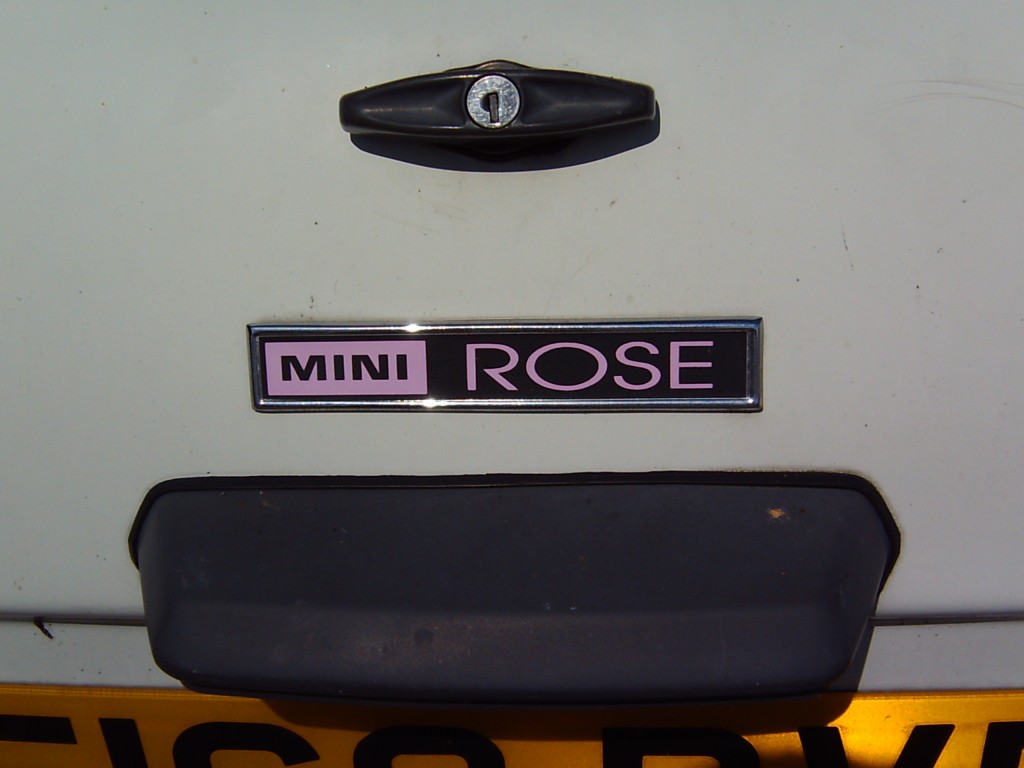 The whole car has an eager sort of character to it, which is only emphasised by the steering. Mini steering is legendary and really doesn’t need to be described but for completeness I’ll say that it’s brilliantly quick and direct, perfectly and evenly weighted and the car reacts instantly. However it’s not twitchy – the Mini isn’t a sports car, after all, and the car’s wide track (the Rose sports natty little plastic wheel arches to cover the later version’s wider-than-original track) and independent suspension means that it isn’t disturbed by imperfections, cambers or bumps in the road.
The whole car has an eager sort of character to it, which is only emphasised by the steering. Mini steering is legendary and really doesn’t need to be described but for completeness I’ll say that it’s brilliantly quick and direct, perfectly and evenly weighted and the car reacts instantly. However it’s not twitchy – the Mini isn’t a sports car, after all, and the car’s wide track (the Rose sports natty little plastic wheel arches to cover the later version’s wider-than-original track) and independent suspension means that it isn’t disturbed by imperfections, cambers or bumps in the road.
Which brings me onto the ride. Oh dear. Minis have never had the most cosseting ride but I’m sure this late example is worse than others. Minis used Hydrolastic suspension for a while in the 1960s but this one has the original setup of rubber-cone springs at each corner with conventional shock absorbers, although it may as well be solid steel bars. I don’t know if the springs are made with stiffer rubber in the later ones, if it’s the wider tyres with their lower-profiles or if it’s just the harder seats but the ride in the Rose is bad even by Mini standards. The ride on early cars is taught, with short-travel springs but at least a certain amount of bounce. This later example has no dicernable ‘ride’ at all, crashing and jarring over bumps and needing to be slowed to a crawl to take speed bumps with a modicum of comfort. On the upside on good road surfaces it’s stable and smooth, it’s just that British roads are so seldom that good.
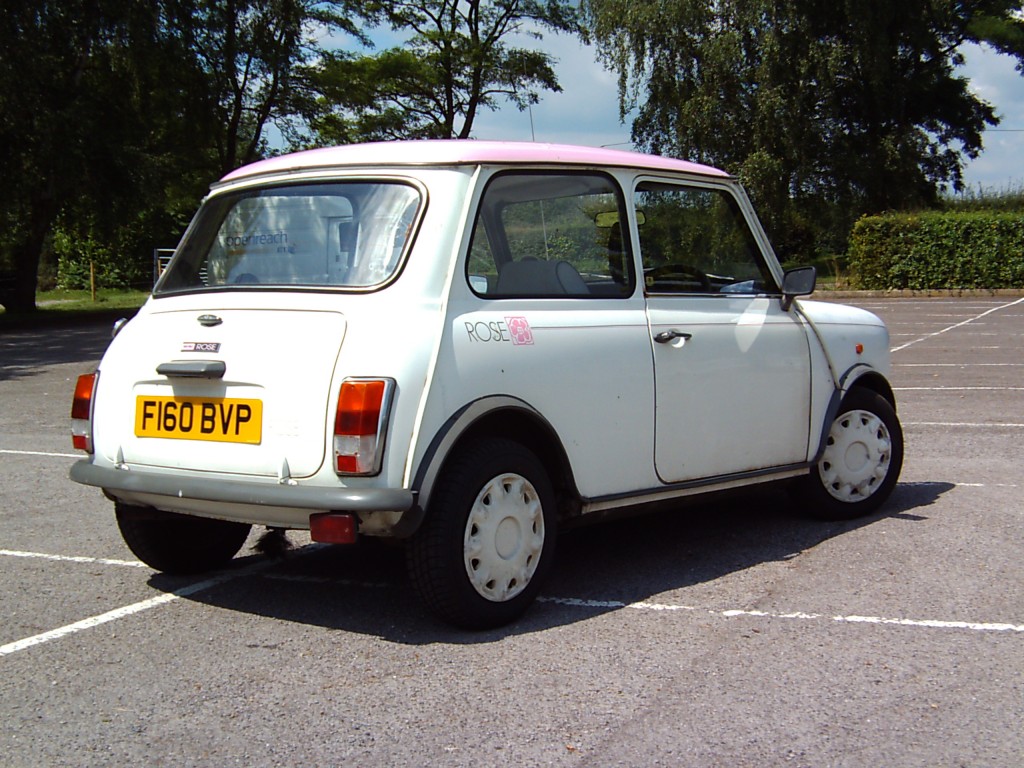 As with all Minis the Rose is a car that oozes character. The average buyer back in 1988 probably bought it for its cutesy looks, distinctive colour scheme and fuel economy. All that still holds true, as does the ever-present involving drive and grin-inducing handling. Combined with peppy performance and just enough concessions to modern driving to cover up the fact that it’s a design from the 1950s. The Mini didn’t last as long as did simply because of poor corporate planning and conplacency – it was always very good at being a practical small car, even when dolled up with some pink stickers and sold as a lifestyle statement.
As with all Minis the Rose is a car that oozes character. The average buyer back in 1988 probably bought it for its cutesy looks, distinctive colour scheme and fuel economy. All that still holds true, as does the ever-present involving drive and grin-inducing handling. Combined with peppy performance and just enough concessions to modern driving to cover up the fact that it’s a design from the 1950s. The Mini didn’t last as long as did simply because of poor corporate planning and conplacency – it was always very good at being a practical small car, even when dolled up with some pink stickers and sold as a lifestyle statement.
1988 Citroen 2CV6 Special ‘Dolly’
 There are two things everyone, even people who aren’t ‘car people’ seem to know about the 2CV. One is that they have a gear lever in the dashboard. The other is that they were designed to carry a basket of eggs over a ploughed field without them breaking. Seriously, I’ve lost count of the number of times I’ve had this conversation:
There are two things everyone, even people who aren’t ‘car people’ seem to know about the 2CV. One is that they have a gear lever in the dashboard. The other is that they were designed to carry a basket of eggs over a ploughed field without them breaking. Seriously, I’ve lost count of the number of times I’ve had this conversation:
“So what d’ya drive?”
“Citroen 2CV [tries to say that in the way a normal person would say ‘Ferrari F40’]”
“Oh yeah? Did you know they were designed to carry a basket of eggs over a ploughed field?”
“Really?! Well what-dya-know…!?”
In fact the 2CV had a much more varied design brief than that. It was designed specifically to replace the horse-and-cart then used exclusively by French peasant farmers. As well as the famous basket of eggs it had to carry 100kg of potatoes, a casket of wine and other assorted cargoes. It had to be driveable whilst wearing clogs. It had to be driveable and maintainable by people who’d never seen, let alone used, an internal combustion engine before. It had to be faultlessly reliable and unbelievably economical. It also had to be able to have an acceptable ride over a French road network consisting either of dirt cart tracks or Napoleonicpave that had been smashed and broken by two world wars.
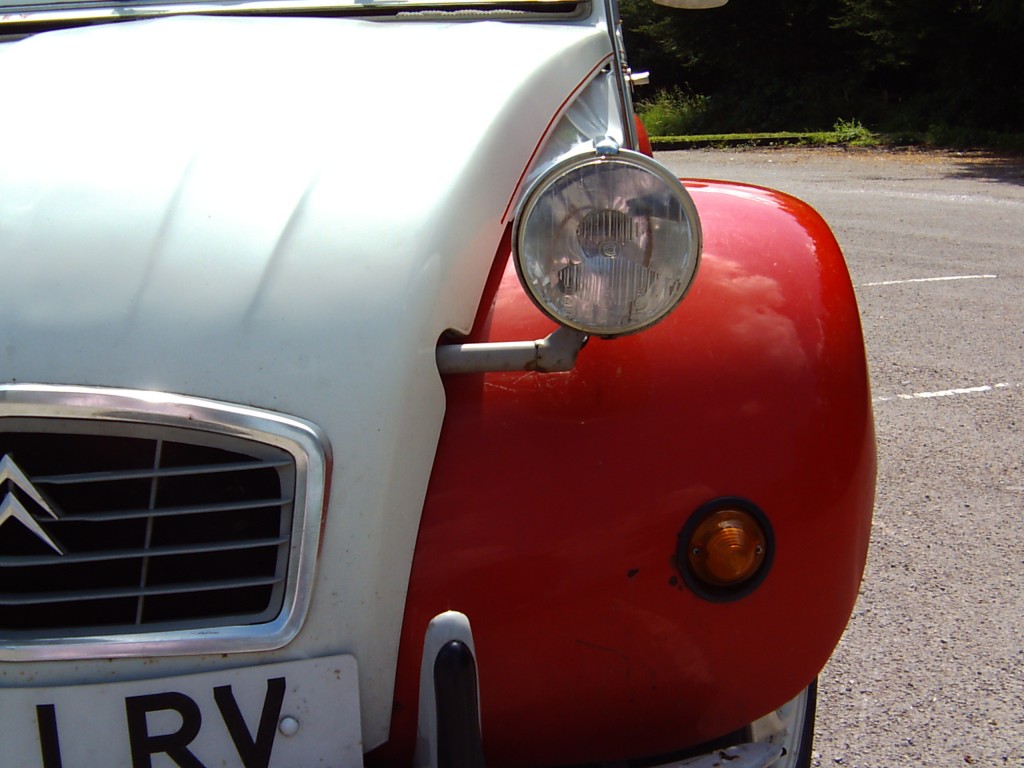 The result was the famous gastropod-shaped car, which finally broke cover in 1948 after a prolonged development was further interrupted by WW2. Forty years later the same Paris factory churned out the red and white example seen here. By this time Citroen, like BL, had cottoned onto the fact that the 2CV had quite a popular following for its own sake and had begun doing special editions. The most successful of these was the ‘Dolly’ which was, in true form, just a basic ‘Special’-spec car with two-tone paint. The Dolly was such a success that by the time this one was built it had become a permanent and popular part of the standard 2CV range.
The result was the famous gastropod-shaped car, which finally broke cover in 1948 after a prolonged development was further interrupted by WW2. Forty years later the same Paris factory churned out the red and white example seen here. By this time Citroen, like BL, had cottoned onto the fact that the 2CV had quite a popular following for its own sake and had begun doing special editions. The most successful of these was the ‘Dolly’ which was, in true form, just a basic ‘Special’-spec car with two-tone paint. The Dolly was such a success that by the time this one was built it had become a permanent and popular part of the standard 2CV range.
Just as no-one could mistake a Mini for anything else, the 2CV’s shape is instantly recognisable. All the more so because there were no other cars on sale in the 1980s that still had seperate front and rear wings, unfaired headlamps, vertical straight sides and entirely flat window glass. The 2CV is a car from the time of swing jazz still being built in the era of electronic dance music. What’s striking is how little it changed in the forty years between those first examples and this one. The Mini’s shape and dimensions didn’t change but there were extensive changes to the structure of the panels. Virtually every panel is interchangeable on any 2CV ever made. The only real change was to the bonnet, with the famous ‘ripple bonnet’ of the earlier cars giving way to the more ‘streamlined’ one in the 1960s. The Mini gained plastic bumpers and wheel trims. The Citroen still uses steel. In a strange parallel one of the only other changes was the fitting of some ugly rear light clusters, in this case units from the Ami 8.
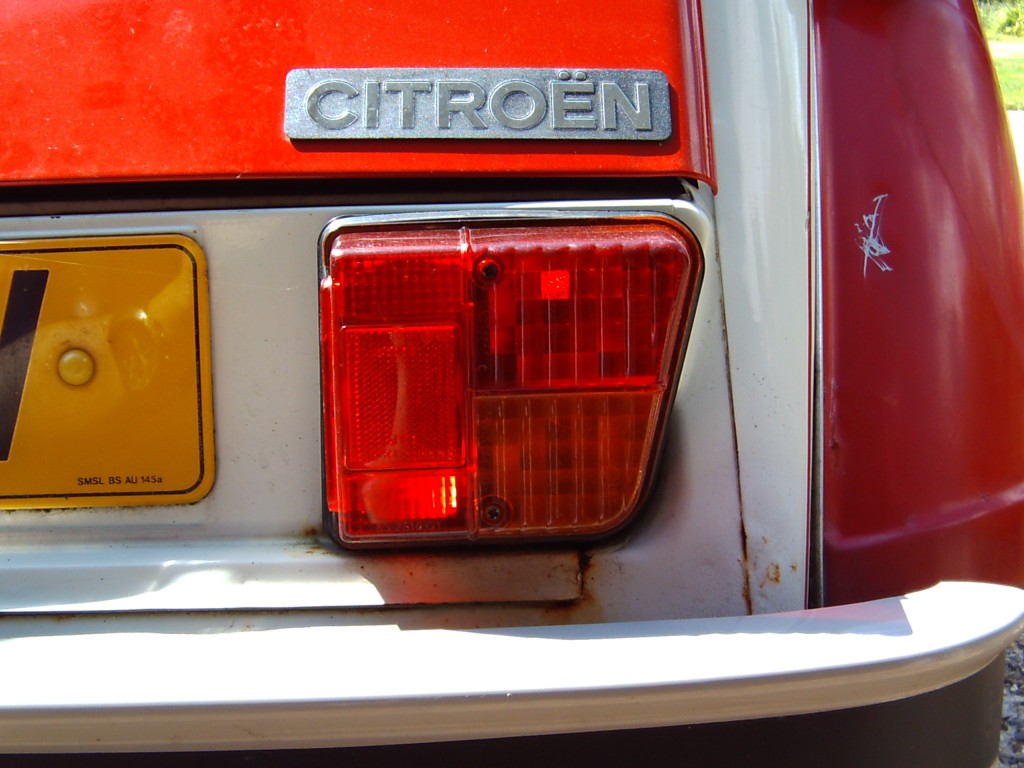 It’s also clear that the Deux Chevaux was intended for a very different life than the Mini. The Mini sits low to the ground and is tightly-built and compact for city life. The 2CV’s stance is very much ‘sit up and beg’, with Land Rover-rivalling ground clearance and a tail-high attitude. What’s striking when the 2CV is seen next to the Mini is that the former is not a small car. The Mini was small by the standards of its day and looks ridiculously small next to a modern supermini. The 2CV is a relatively long car and although developed under the codename of the ‘Tout Petite Voiture’ (‘Very Small Car’) it’s not that small. It matches most modern small cars for length but is rather oddly proportioned, being on the narrow side.
It’s also clear that the Deux Chevaux was intended for a very different life than the Mini. The Mini sits low to the ground and is tightly-built and compact for city life. The 2CV’s stance is very much ‘sit up and beg’, with Land Rover-rivalling ground clearance and a tail-high attitude. What’s striking when the 2CV is seen next to the Mini is that the former is not a small car. The Mini was small by the standards of its day and looks ridiculously small next to a modern supermini. The 2CV is a relatively long car and although developed under the codename of the ‘Tout Petite Voiture’ (‘Very Small Car’) it’s not that small. It matches most modern small cars for length but is rather oddly proportioned, being on the narrow side.
Inside it’s clear the Citroen is an exercise in denial. Part of the ‘Dolly’ spec was the fitment of the slightly plusher seats from the more upmarket ‘Club’ and ‘Charleston’ cars. The normal Special had grey cloth with natty blue and yellow cheque weave. The Dolly has oh-so-80s quilt-effect polyester upholstery. That’s the only concession to luxury and it makes no real difference. Just to emphasise how basic the 2CV is, I will list some of the things it doesn’t have- self-cancelling indicators, indicator warning light, main beam warning light, charge warning light, opening rear windows, heater fan control, wipers with more than one speed, electric windscreen washer pump…. Such things are not strictly neccessary and so they are not fitted. There are plenty of exposed wires and relays, mostly bound together with cable ties. The other striking thing is the open feeling to the cabin, thanks to the huge areas of glass and the thin window pillars. Also helping this is the flat floor, something the Mini doesn’t manage despite both cars having all their major mechanical components under the bonnet. Of course the famous dash-mounted gearchange features here.
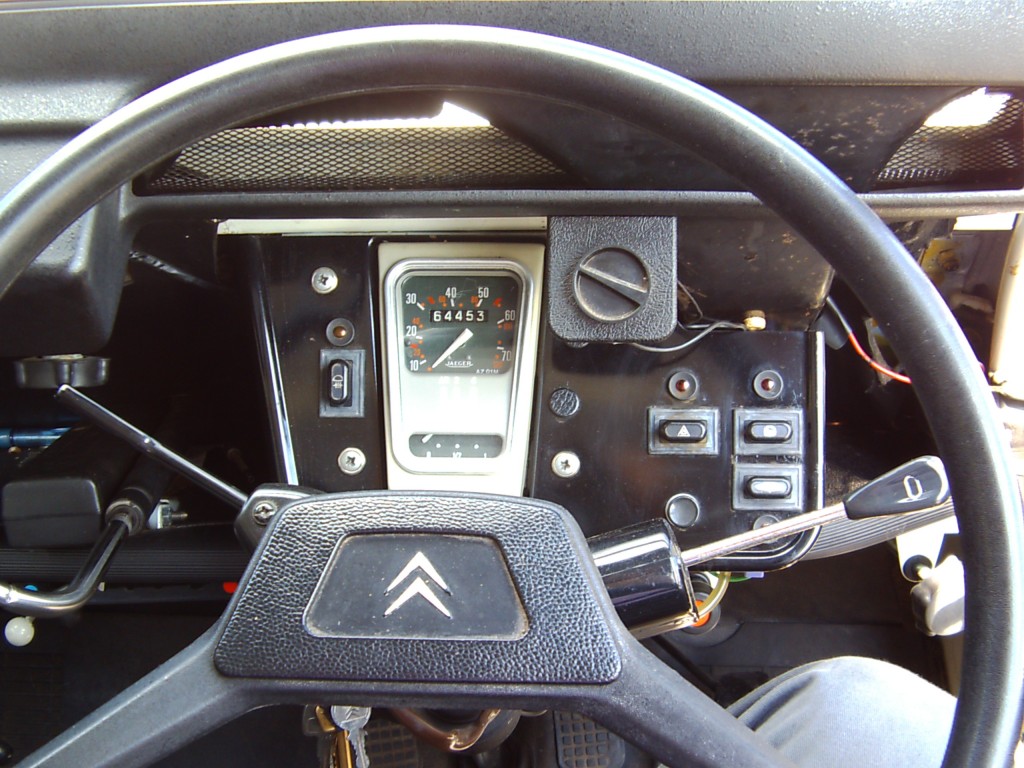 So, you slide behind the thin steering wheel (sadly not one of the volante monobranche one-spoke types from the 1970s), wiggle the gearlever and turn the key. The air-cooled 602cc flat twin whirs and coughs into life after a bit of churning. It clatters and thrums away to itself. It has none of the inherent refinement of the A-Series but has rustic, almost crude flavour that seems in keeping with the car’s ruthless simplicity.
So, you slide behind the thin steering wheel (sadly not one of the volante monobranche one-spoke types from the 1970s), wiggle the gearlever and turn the key. The air-cooled 602cc flat twin whirs and coughs into life after a bit of churning. It clatters and thrums away to itself. It has none of the inherent refinement of the A-Series but has rustic, almost crude flavour that seems in keeping with the car’s ruthless simplicity.
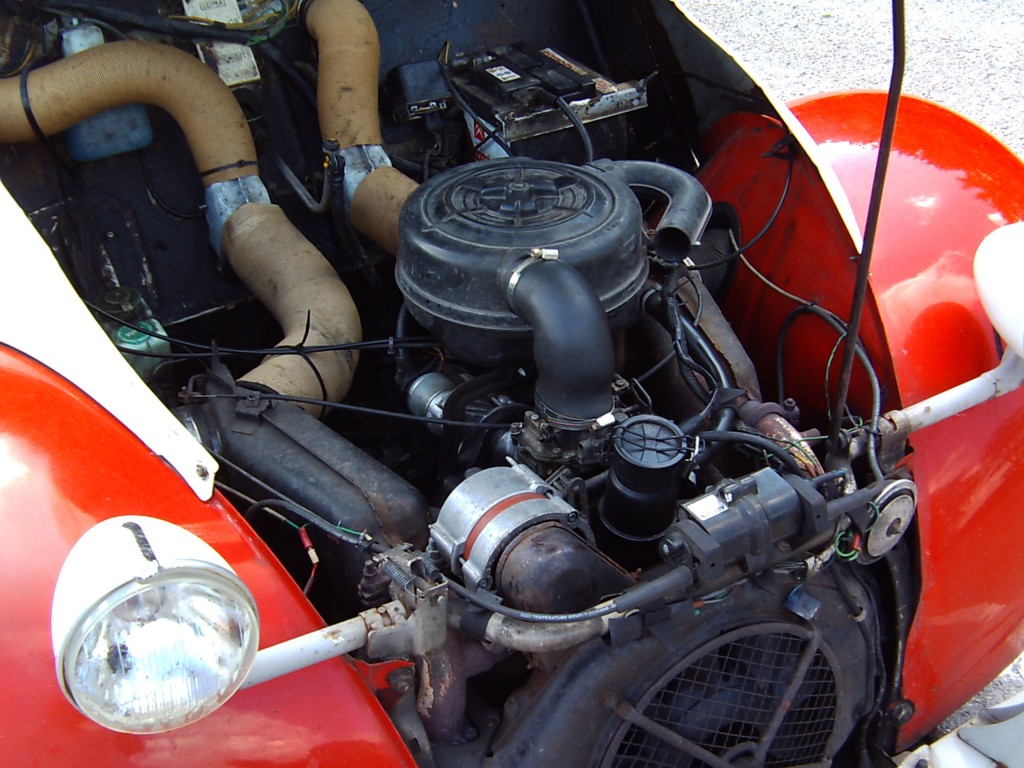 Depress the very light clutch (no heater to get in the way in the Citroen) and it’s time to do battle with That Gear Lever. In reality it’s straightforward to use- the motions are the same as a normal gearchange (forward, backward and side-to-side) it’s just the twist-action bit that needs to be mastered. The other quirk is that it has a dog-leg shift into 1st. The 2-pot engine puts out 28 horsepower, 10 less than the Mini but the 2CV weighs significantly less at 550 kg. However the performance of the Citroen is noticeably flatter. Unlike the Mini the 2CV’s motor is not one with a lot of torque. It needs a fair old chunk of throttle to pull cleanly away and you quickly realise that the best way to make progress is drive it like an irate French farmer – full throttle, engine screaming away right up to the redline marks on the speedo and don’t slow down for anything. The engine revels in this sort of abuse, and history as shown the 2CV motor to be pretty much unbreakable as long as there’s a modicum of oil in the sump. The gear ratios are widely and equally spaced which encourage you to carry a lot of revs before changing up the next one.
Depress the very light clutch (no heater to get in the way in the Citroen) and it’s time to do battle with That Gear Lever. In reality it’s straightforward to use- the motions are the same as a normal gearchange (forward, backward and side-to-side) it’s just the twist-action bit that needs to be mastered. The other quirk is that it has a dog-leg shift into 1st. The 2-pot engine puts out 28 horsepower, 10 less than the Mini but the 2CV weighs significantly less at 550 kg. However the performance of the Citroen is noticeably flatter. Unlike the Mini the 2CV’s motor is not one with a lot of torque. It needs a fair old chunk of throttle to pull cleanly away and you quickly realise that the best way to make progress is drive it like an irate French farmer – full throttle, engine screaming away right up to the redline marks on the speedo and don’t slow down for anything. The engine revels in this sort of abuse, and history as shown the 2CV motor to be pretty much unbreakable as long as there’s a modicum of oil in the sump. The gear ratios are widely and equally spaced which encourage you to carry a lot of revs before changing up the next one.
When the engine’s on the boil you want to keep it there and when it takes over 20 seconds to get to 60 MPH every MPH counts. You don’t want to shed speed uneccesarily and it’s here that the ride and handling come into play. The Mini handles well in a very conventional way – quick, accurate, responsive steering, huge grip, no body roll. The 2CV, as you’d expect, isn’t conventional. Like the Mini it has rack-and-pinion steering but with skinny tyres (narrower than most modern motorbikes) it doesn’t have the same grip. The 2CV tends towards understeer when pushed hard but this can be sorted by simply winding on more lock. The steering is light and direct around the centrepoint but weights up significantly when pushed hard. The body roll is another 2CV hallmark. With no anti-roll properties or devices at all the little Citroen adopts crazy angles of lean at even low speeds. The car’s long travel suspension means that it never risks lifting a wheel and the unique steering geometry keeps the tyres perpendicular to the road at all times. The result is that, despite its tall and tottery looks the 2CV grips like, well, a snail. It can be wound along a twisty country road at any speed the engine is capable of reaching without having to slow down.
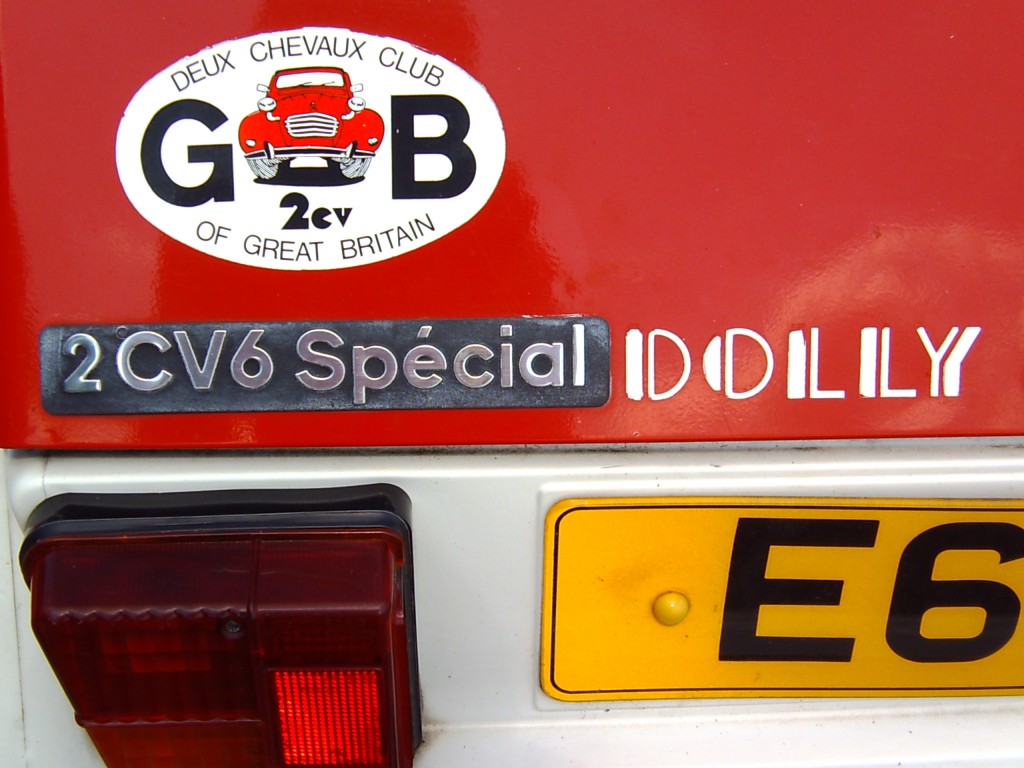 In terms of ride the Citroen has the British product soundly beaten, but this is no real slight on the Mini because few cars can match the ride of an old Citroen product. The 2CV doesn’t have the same absolute isolation from the entire driving experience that one of its hydro-pnuematic stablemates can provide but it’s almost entirelt unequalled by cars of its class. To describe the system in full would require a whole new article but in short it’s independent coil-springs which are interconnected on each side front-to-rear acting through pull-rods. The entire sprung weight of the car pivots on four near-frictionless ‘knife edge’ joints and the unsprung weight is kept to a minimum by the thin wheels and tyres and the inboard front brakes. The result is an incredibly supple, cosseting ride with so much travel that even serious obstacles like speed bumps taken at a good pace don’t really reach the occupants. The car floats along the road with a characteristic ‘lope’, constantly bobbing up and down in reaction to the slightest crest or dent. It’s an odd experience, rather like travelling on a gigantic watet bed, but you quickly get used to it and it goes a long way to making the 2CV, for all its lack of performance, surprisingly good at long-distance work.
In terms of ride the Citroen has the British product soundly beaten, but this is no real slight on the Mini because few cars can match the ride of an old Citroen product. The 2CV doesn’t have the same absolute isolation from the entire driving experience that one of its hydro-pnuematic stablemates can provide but it’s almost entirelt unequalled by cars of its class. To describe the system in full would require a whole new article but in short it’s independent coil-springs which are interconnected on each side front-to-rear acting through pull-rods. The entire sprung weight of the car pivots on four near-frictionless ‘knife edge’ joints and the unsprung weight is kept to a minimum by the thin wheels and tyres and the inboard front brakes. The result is an incredibly supple, cosseting ride with so much travel that even serious obstacles like speed bumps taken at a good pace don’t really reach the occupants. The car floats along the road with a characteristic ‘lope’, constantly bobbing up and down in reaction to the slightest crest or dent. It’s an odd experience, rather like travelling on a gigantic watet bed, but you quickly get used to it and it goes a long way to making the 2CV, for all its lack of performance, surprisingly good at long-distance work.
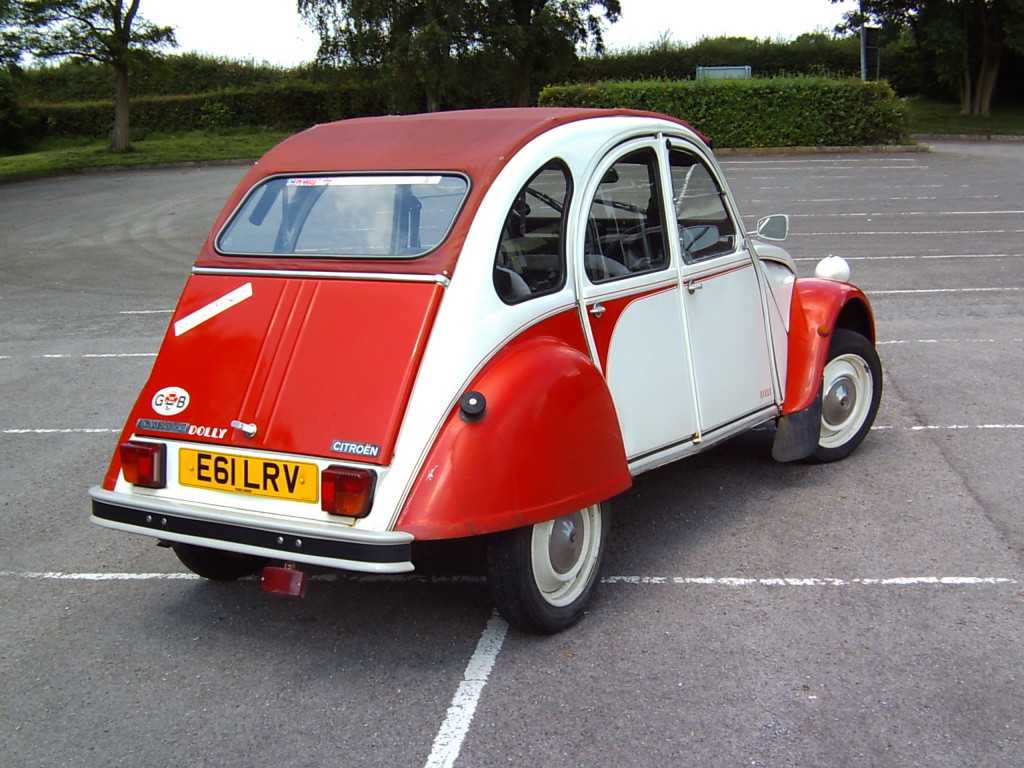 Both these cars have the same basic brake setup with front discs and rear drums. The Mini has a servo whilst the Citroen has bigger braking surfaces. Do the Deux Chevaux’s discs count as ventilated because they have ducts to channel air from the engine fan? In any case there isn’t much to choose between them. Both are well up to the performance of the cars but the 2CV’s require more effort to get them to bite, as you’d expect. Of course the Citroen’s system works by the medium of LHM fluid, the characteristic bright green oil that is the life blood of most of Citroen’s hydropneumatic products.
Both these cars have the same basic brake setup with front discs and rear drums. The Mini has a servo whilst the Citroen has bigger braking surfaces. Do the Deux Chevaux’s discs count as ventilated because they have ducts to channel air from the engine fan? In any case there isn’t much to choose between them. Both are well up to the performance of the cars but the 2CV’s require more effort to get them to bite, as you’d expect. Of course the Citroen’s system works by the medium of LHM fluid, the characteristic bright green oil that is the life blood of most of Citroen’s hydropneumatic products.
Conclusions
The 2CV has clearly evolved less over its life than the Mini. This is not surprising because, really, the 2CV was always more of a unique product, tailored to suit a very particular way of life. Like the Mini a lot of the 2CV’s fossil-like nature was due to a complete lack of interest by its corporate parents. But much more of the Citroen’s original essence remains than in the Mini’s case. The Mini’s ‘wizardry on wheels’ was the packaging of four people in such a small cabin. By the 1980s this had been corrupted somewhat by modifications to the original design. Put simply the 1980s Mini isn’t quite as good at being a Mini than one from 1959. The Dolly, for all its jazzy paint and quilted seats, could still carry that basket of eggs over a ploughed field. You can still remove all the seats in less than a minute for picnics or to put a goat in the back. On the other hand the Citroen in many ways is still rooted in 1940s postwar austerity in terms of its equipment levels and performance. It is much more unconventional than the Mini and requires a certain amount more dedication from the owner to put up with them. However, speaking personally, I would happily put up with a wierd gear change and a funny-sounding engine if it meant I didn’t have to endure the ride of the Mini.
